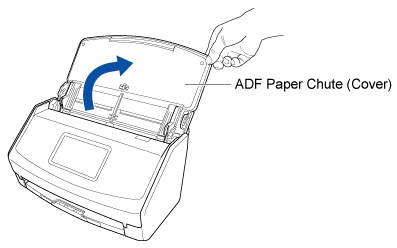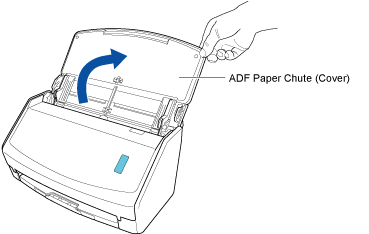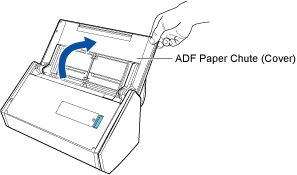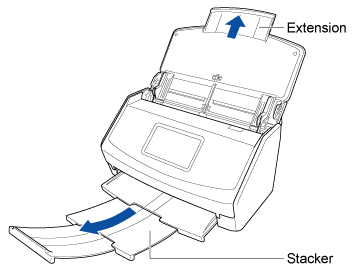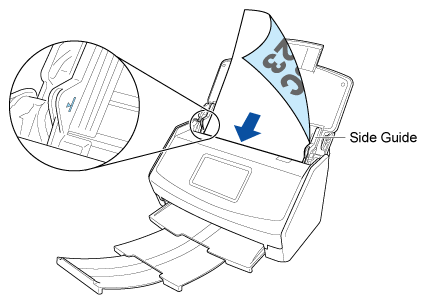Files are uploaded and saved to storage cloud services. The uploaded files can be viewed anytime and anywhere, and can be shared with others easily.
This section explains how to establish a link with a cloud service by using ScanSnap Cloud.
Before using ScanSnap Cloud, you need to agree with the Terms of service for ScanSnap Cloud and configure the settings. For details, refer to Saving a Scanned Image in a Cloud Service by Using ScanSnap Cloud.
For regions where ScanSnap Cloud can be used, refer to here.

This section explains how to scan basic documents and save the scanned images in a cloud service.
For details about how to scan various documents, refer to How to Scan Documents.
For details about how to scan various documents, refer to How to Scan Documents.
-
Prepare documents to be scanned with the ScanSnap.
Prepare documents that you want to save in a cloud service.
- Open the ADF paper chute (cover) of the ScanSnap to turn the power on. Hold the right side of the ADF paper chute (cover) of the ScanSnap then open it or press the [Scan] button to turn it on. Open the feed guide of the ScanSnap to turn the power on.
- Prepare a profile in ScanSnap Home.
-
Click the [Scan] button at the top of the Main Window of ScanSnap Home to display the Scan Window.
-
Click
 to display the [Add new profile] Window (When Using ScanSnap Cloud).
to display the [Add new profile] Window (When Using ScanSnap Cloud).
- Select [Upload Files to a Cloud] from the template list.
- In the list that is displayed when you click the [Select] button for [Cloud Service] in [Save destination], select a cloud service to specify it as a save destination.
If necessary, change other scan settings.
- Click the [Add] button to add this profile to the profile list in the scan window.
-
In the home screen on the touch panel, select the profile that you added in step 3 from the profile list.
- Scan documents with the ScanSnap.
-
Pull out the extension and the stacker on the ADF paper chute (cover).
-
Load documents in the ADF paper chute (cover).
Load the document face-down and head-first with the back facing you (when loading multiple documents, the last page is on the top).
Adjust the number of documents so that they do not go beyond  within the side guides when they are loaded.
within the side guides when they are loaded.
-
Align the side guides with both ends of the documents.
Hold each side guide in the middle to adjust them. Otherwise, the documents may be fed skewed during scanning.
-
Press the [Scan] button. Press the [Scan] button.
An image of a document that you scanned is saved in the cloud service that you specified for the save destination.
To check if the scanned image is saved in the cloud service that you specified for the save destination, refer to the manual of that cloud service.
 Saving Files to Cloud Services
Saving Files to Cloud Services
